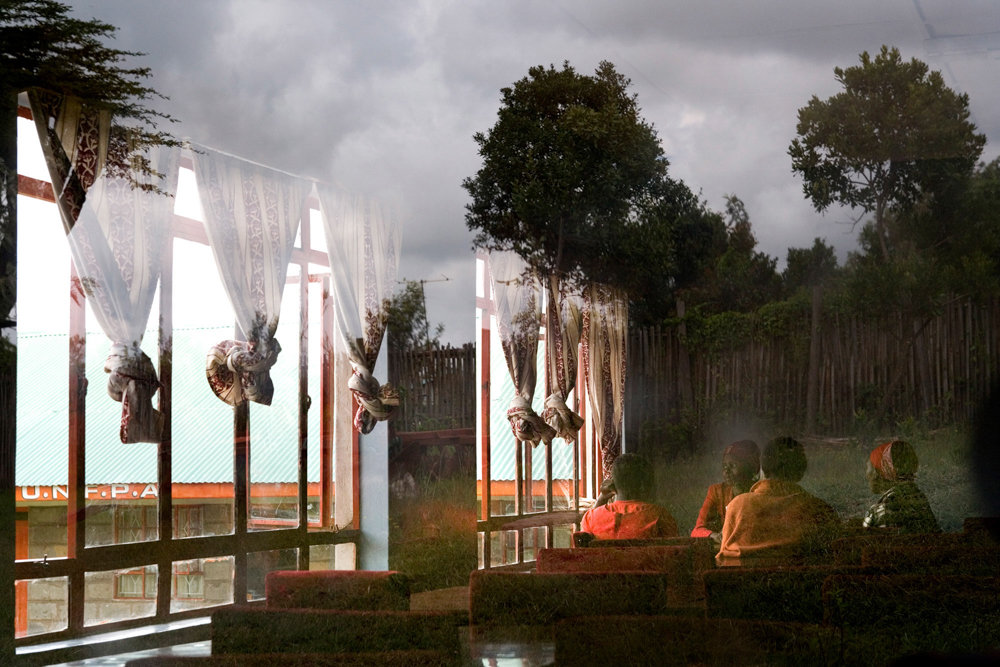UN Panel Promotes Zero Tolerance Policy for FGM Globally
In a strong assertion of the human rights of women and girls, the United Nations (UN) lists the elimination of female genital mutilation (FGM) globally among its many goals for 2030. As part of its initiative to raise awareness of the harmful practice, the United Nations Population Fund (UNFPA) partnered with the media group Dysturb to present a photo exhibit on the topic at the UN Visitors Lobby in New York from 6 February 2019, the International Day of Zero Tolerance for Female Genital Mutilation, through 25 March 2019.
The exhibit, Female Genital Mutilation: 68 Million Girls at Risk, featured photos of women and girls from different geographic regions who have undergone FGM, along with data-filled sidebars that provided insight into the scope of the practice throughout the world. The title refers to the UN’s 2030 goal: “More than 200 million girls and women alive today have been cut around the world, and around 68 million girls may be cut if efforts are not accelerated to end this harmful practice,” asserted UNFPA in 2018.
Over the last several years, UNFPA has been instrumental in raising awareness about the dangers associated with FGM, which can include chronic pain, lifelong recurring infections, disfigurement, reproductive issues, and, too often, death. Despite the deleterious effects of the practice — often performed on girls before adolescence — resistance to abandoning it runs deep: in the communities that practice FGM, religious and cultural traditions have normalized the practice, and in some cases, erroneously promote it as a beneficial procedure.
UNFPA’s efforts to support the elimination of FGM throughout the world are multi-pronged. Besides consciousness-raising media campaigns such as the photo exhibit (which also included the spread of mural-sized posters throughout New York City), UNFPA partners with NGOs in high-risk regions to develop FGM community outreach programs, healthcare facilities, and, when possible, governmental legislation against the practice.
These efforts have been gaining traction worldwide, especially in countries with a high incidence of FGM, such as Burkina Faso, Senegal, and Mauritania. On 12 March 2019, a UN panel of NGO directors and community leaders, along with one FGM activist who had undergone the procedure as a child, convened to discuss global progress toward zero tolerance for FGM to date. The public discussion, Our Girls Are Born Complete, talked about the success of open public discussions in at-risk communities, the engagement of youth in educational initiatives promoting zero tolerance, and the recent implementation of laws that ban or criminalize FGM outright. (The U.K. saw its first conviction for FGM in early March of this year.)
The panel discussion closed with a short film, One Voice to End FGM, and the testimony of Ifrah Ahmed, a Somalian refugee and FGM survivor. After becoming an Irish citizen, she said, she was able to return to her native Somalia—the country with the highest rate of FGM in the world, at 98% of all females — and speak candidly not only about her experience of FGM, but that of others who did not survive.
She called attention to the case of a 10-year-old Somalian girl who bled to death in July 2018 after undergoing the procedure. Media attention to cases like this and ongoing activism have “helped people to understand,” Ahmed said. This understanding is instrumental in forwarding the UN’s zero tolerance policy for FGM and in assuring the safety of millions of at-risk girls and women worldwide, the panel concluded.

The Tasaru Safehouse for Girls in Narok, Kenya, provides a safe haven from FGM and childhood marriage for girls of the Maasai ethnic group in 2006.
Photo: Marvi Lacar/Lowy + Lacar. From the exhibit, Female Genital Mutilation: 68 Million Girls at Risk, United Nations, New York.